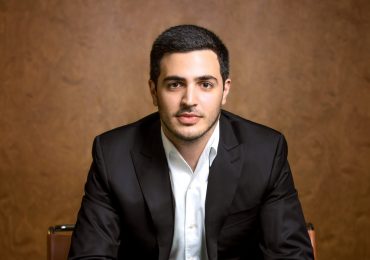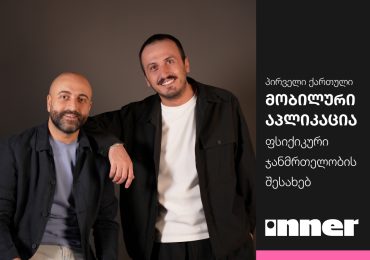When it comes to conversation-killing topics in Georgia, there can be few more potent than golf. An ancient sport dating back to 15th-century Scotland, it is played today in over 200 countries. This includes Georgia – though you’d be excused for not knowing.
With only one golf facility in the country at present, a 9-hole course at the Ambassadori complex in the village of Kachreti, an hour and a half’s drive from Tbilisi in Georgia’s wine-rich eastern region of Kakheti, the country remains scarcely charted territory for the sport.
Many Georgians will have heard of Tiger Woods or will have seen films like Caddyshack and Happy Gilmore, but that’s where the familiarity generally ends. Golf is widely perceived here as the preserve of the rich westerner or the local elite, an image likely to be upheld by what will be Georgia’s second golf facility – a lavish 18-hole course designed by a Spanish architect in Krtsanisi on the outskirts of Tbilisi due to open in 2017.
The course is to make up only one element of a “luxury real estate and lifestyle environment” at Krtsanisi Park Residences, where there are hopes to attract international tournaments in the near future.
Doubling the number of golf facilities in the country appears a forward step for the sport, but the likelihood of this leading to popularity among the average man and woman in Tbilisi or beyond is slim.
Exact fees have not yet been published, but the course originally pledged to release only 600 lifetime memberships, with only members and their guests permitted to play. The word “lifetime” implies a sizeable contribution, one that would exclude all but a tiny fraction of the population.
So, even with the new course on the horizon, residents of Tbilisi won’t be flocking to pick up a new set of Titleists any time soon.
But with a plethora of underused agricultural land, an annually growing tourism industry and a young generation leaning more West than East, could Georgia be untapped fertile golfing ground?
Research conducted by Georgian businessman David Motsikulashvili at the European School of Economics at the University of Buckingham in 2012, found that there was, if not concrete interest, at least some curiosity about golf in Georgia.
Having interviewed around 800 people at random in the Tbilisi area, he found that nearly 90% had never had any experience of golf, but that 73% would like to if presented with an opportunity to do so.
Similarly, 77% of respondents claimed they would prefer to try golf on a course, instead of a practice facility.
However, such a clamour to play the game in its full form before even swinging a club represents one of the main problems encountered by Samuel Smart, a native of Missouri, and until recently, the course professional at Kachreti.
The American enjoyed an interesting year at the course where membership barely exceeds 20, of which only two or three are Georgian.
Among the achievements of the course in its short existence so far are putting its head greenkeeper through a turf management program, and the hosting of small tournaments as well as wine and golf days.
However, with the Ambassadori bringing in most of its revenue from weddings, conferences and other functions, the golf course, though a very enjoyable challenge for beginners and seasoned golfers alike, is not always a budget priority.
Location stands out as a key concern. A 90-minute drive from Tbilisi, the chance to play a round of nine holes after a day’s work is almost non-existent for the capital city’s dwellers.
Annual membership of 1,500 GEL for a course you are only likely to reach at weekends or during holidays represents a luxurious outlay for the bulk of the country’s would-be golfers.
Smart, 32, still visits the course regularly to feed his golfing habit, and he still retains a belief that golf can penetrate Georgian society.
However, he claims that the sport needs to crawl before it can run in the country.
Simply put, golf is difficult. And playing for the first time can be an infuriating and daunting experience, especially if thrown straight into the course environment, surrounded by bunkers (sand traps), water hazards, rough (long grass), trees and, worse still, experienced and competent golfers.
Learning in isolation away from the anxiety of the course and the fear of embarrassment ought to be the formula for golf development, which would require driving ranges and academies rather than expansive and expensive courses.
Giving average Georgians, young or old, the chance to swing a club ought to be the priority, thereby instilling a familiarity with the game and, hopefully in many cases, some enjoyment for it.
No such academy or range exists in Georgia at present, but the R&A (golf’s governing body) has identified the benefits of such facilities in its “Golf Around the World” report of 2015, especially for small and, in golf terms, young nations.
It highlights a facility in the Czech Republic near the city of Brno where people can play a very short six-hole course with a driving range and other academy facilities, described as an urban golf academy to attract new golfers to the game.
The benefits of such a project compared to the grand 18-hole alternatives for developing golf nations are mainly the comparatively small amount of land required, and the relatively low maintenance costs.
Indeed, a driving range could be set up inside less than a square kilometer with a couple of staff and very few upkeep costs once the initial outlay for balls, equipment, etc. has been paid.
A facility of this type remains absent, although the new virtual golf experience offered by Hotels and Preference Hualing Tbilisi may lure a few curious locals to the game. From a golf tourism perspective, Georgia can look to the nearby example of Turkey where, without a glimmer of golfing history, a total of 18 facilities are now operating. Most are part of the massive Turkish all-inclusive resort market, and are linked to the UK (Europe’s biggest golf market by a considerable distance) by one flight.
Therefore, Georgia’s chances of competing with Turkey on this front are slim, if ever a desire even arose to do so.
If golf is to ever make its pitch-mark on Georgia, it must do so from the grass roots, allowing people to see the game as a symbol of fun rather than status.
Once people know how to play the game, the need and demand for courses would be greater and the likelihood of sustaining them with regular green fees and memberships would also improve.

















